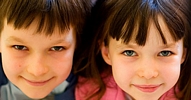Lack of sleep can effect the functioning of a person as well as carers.
There are many factors that can effect sleep patterns for people on the Autism Spectrum and LD. This article is a collection of advice and strategies from a variety of sources.
Sleep associations
These are the mind and bodys way of telling us when it is time to sleep. Each of us has there own associations e.g lights on/off, cocoa before bed etc.. Often how we go to sleep will determine if we have difficulty going back to sleep if we wake. It is not advisable if you wake during the night to fall asleep with the TV on. The sleep association will be with the TV therefore you may need the TV back on in the middle of the night to fall back to sleep. People with Autism/LD are no different however there may be other factors to consider.
Distancing approach
When a child/person has difficulties settling to Sleep one way maybe to sit with them. This would serve as a comfort but also to remind them it is time to sleep. When sitting by them do not stimulate conversation but say'time to sleep....' At first it may take some time before the person settles however with consistency this should decrease. This of course creates a sleep association so the next steps are to withdraw from the bedroom (slowly) step by step to eventually out of the room.
Structure/Routine
Sleep can be disturbed due to a lack of routine and structure. For some people on the Autism Spectrum/LD who rely on structure for security and to make sense of the world changes can have a great effect on sleep patterns.
Advice
Have the same routine that everyone follows. Stick to it at the weekend and even when on holiday as people with AS/LD can find it hard to accept changes to routines. A visual/picture timetable may be useful as it shows clearly what the evening routine is. For example the routine could be as follows:
- Meal-Activity-Bath-Clean teeth-Toilet-Bed time
This timetable could be placed somewhere that is easily accessed.
Each step could have a symbol which can removed as each task is finished. (perhaps put it in an envelope).
A speech and language therapist or teacher could help parents/carers to access the symbols or go to the local library and access ‘Boardmaker' software on the computer.
Communication-Social Stories
This is an approach that can help people with AS/LD to understand the ‘social rules' regarding sleep, for example, that everyone needs to sleep, where to sleep, when to get up. Some people with AS/LD who have all consuming interests may want to stay up all night engaging in them.
A speech and language therapist or teacher may help you develop a social story.
Communication-Objects of Reference
These are everyday objects that can help people with a learning disability communicate their needs/choices, particularly if they are non verbal.
For example a photo of their bed/bedroom, a certain blanket or cuddly toy could be introduced. Whenever you are prompting a person to go to bed, show them the object as you say the word/make the sign. Over time they will use that object to indicate that they want to go to bed, or realise that this object indicates what is happening next.
Continence
If someone has continence difficulties either being incontinent at night or being constipated this will effect sleep.
Advice-
Try to encourage the person to use the toilet during the evening before bed. Assess their bowel movements for constipation. You may need further advice when there is waking due to being wet or soiled.
Environmental and sensory needs
Many people with AS/LD are sensitive to their environments. It worth doing an environmental and sensory needs assessment when considering sleep, to find out what preferences are.
A Learning Disability Nurse or Occupational Therapist could help you
Overstimulation
Around an hour before bed begin to ‘wind down'. Turn off the T.V./music (that is stimulating), avoid lively play, and dim the lights.
Hearing/noise sensitivity
Consider using thick carpets that deaden noises. Shut their bedroom door and have their bedroom in a quieter part of the house. Consider noises from the bathroom and the position of a bed in the room can be important, avoid it being near pipes, the bathroom or looking out over a busy, noisy street.
A ‘white noise'; for example humming or a radio tuned out can help others to settle.
Vision sensitivity
Use neutral colours that are not too intense or loud. Plain or pastel coloured walls and carpets, avoid patterns, stripes. Avoid visual displays on the walls. Keep the room clutter free; remove toys/TV/play station/Wii etc. The bedroom should be for sleep only not for play.
Use black out blinds/curtains/shutters to block out the light if a child has hypersensitivity to light. If a child is frightened of the dark introduce a night light. If ‘switch flicking' is a problem remove the light bulb or consider having the switch moved to outside the bedroom door.
Smell sensitivity
Consider using odourless non toxic paints/wall paper paste. Avoid strong smelling air fresheners and cleaning materials.
Touch sensitivity
Think about whether your child prefers deep pressure when being touched. If so they may need heavy/weighted blankets tightly tucked in to feel secure. Others may need lighter bed clothing if they are hypersensitive to touch. Looking at bedding materials that may irritate.
Temperature
Try to keep the bedroom at a constant temperature that is comfortable for your child. Perhaps use a thermostat.
Spacial sensitivity
Keep furniture to a minimum and have it placed around the edges of the room in smooth lines. Avoid objects in the centre or in walkways. If furniture needs to be moved do it gradually. Don't change too many things at once.
Involve everyone in planning for any changes and warn them that it is going to happen. Discourage bouncing on the bed; instead introduce a trampoline in another part of the home.
Food and allergies stimulation
Look at diet. If they are eating and drinking foodstuffs that have a lot of sugar, caffeine or additives their sleep can be affected. Avoid these all together if possible but definitely not around bedtime.
If all else fails -Melatonin?
Melatonin (sleep hormone) can be irregular for some people with AC and learning disability for various reasons. The use of melatonin as a short term method of helping to instigate a sleep routine may be helpful. It could be used in alongside behavioural approaches described above.
Some foods have melatonin in such as plums, bananas and Brazil nuts. However, no research into the potential benefits of a diet that is high in melatonin and the effect on sleep has been carried out yet.
Relaxation techniques
Massage can be helpful in reducing activity levels but this depends on individual's sensitivity.
Lavender oil drops on the pillow can help to encourage relaxation and sleep but again sensitivity and seizures need to be considered.
Relaxation music or tapes can be helpful for some people with AS.
Some other General advice
What to do if your Child gets out of bed
When young children move from sleeping in a cot to sleeping in their own bed they may need help to learn to stay in bed.
Waking in the night and coming into the parents' bed is also a common problem in young children. 30 to 40 percent of children aged two to five get up at night on a regular basis. They may express fears of the dark, ghosts or monsters.
What to do.
- Stay calm and return your child to their own bed. If necessary pick them up and carry them. Do this as many times as needed. Do not take a child into your bed as this is likely to perpetuate the behaviour.
- If your child comes into your room at night because they are worried about whether you are there, take them back to their room and reassure them briefly that you will be there and will see them in the morning and leave the room. Be calm and firm. Do not be angry with your child or provide too much attention e.g. cuddles. Any positive or negative attention is likely to reinforce the behaviour pattern.
- If your child has nightmares, turn on the light briefly and show them how familiar their room is. Reasssure them that everyone has dreams sometimes and that they are not real. Do not take them into your room to comfort them so that they learn to handle their fears in their own bed.
Early Waking
By 5am a person will have completed most of his/her nights sleep.
At this early hour the desire to sleep is less strong than at bedtime or earlier in the night. Some children, now sleeping more lightly, will wake if there is a mild disturbance e.g. light entering the room, early rising family member, traffic noise etc If interruptions are frequent enough your child will learn to anticipate them and may start to wake spontaneously or as a habit before dawn. The problems are best solved by reducing disturbing factors.
If early waking continues then delay your response to your childs awakening. If your child is crying and unhappy then he/she is still likely to be in a night time sleeping rhythm and needs to learn the habit of going back to sleep. Go into their room, tuck him up and say, "Go to sleep" and leave the room. Return at 10-15 minute intervals and repeat the same message. If you are consistent in doing this, after a week or so, your child should start to sleep a little longer.
Do not reward early waking with milk/bottle/drink, food. play, attention or coming into your bed. This will then become a long term early waking habit.
Early waking can be tricky. Some children are early wakers despite all efforts to modify their sleep pattern but most can learn to sleep a little longer. If your child is already getting an adequate number of hours of sleep, then consider delaying bedtime by thirty to sixty minutes. For some parents it may be you will have be up earlier than you might like for a few months until your child extends his/her sleep pattern.
- Once you have reassured your child, leave their room. Ignore crying and protests. Return them to their bed without speaking if they continue to get out of bed. You might want to calmly close their door and to open it once they are in bed and quiet for two minutes.
- Consider a reward programme. Give your child a sticker for each night that they stay in their own bed. Stickers could be traded in for a small treat at the end of the week.
- During the day, help your child to feel secure and loved through praise and encouragement. They might want to draw a picture of a scary dream or to come up with an alternative happy ending. You might want to repeat that dreams are not real and to talk about what to do to get back to sleep if a dream wakes them up. For example teach them to think of a place where they feel happy and safe when they are going back to sleep. Try to have these conversations in the daytime and keep interaction down to a minimum at night so they are not rewarded with your attention.
'Sleep deprivation is used as effective torture in some parts of the world'
Good luck
References:
Andrews.C-(2009) - Sleep Problems with Children with ASC , NHS Leeds (unpublished)
?_encoding=UTF8&search;-type=ss&index=books-uk&field;-author=Olga%20Bogdashina" Bogdashina . O- (2003) -Sensory Perceptual Issues in Autism: Different Sensory Experiences - Different Perceptual Worlds, London. Jessica Kingsley Publishers.
Gray.C (2000) The New Social Story Book, Illustrated Guide, Future Horizons, USA
National Autistic Society (2004), Helping your child with autism to sleep better. (This leaflet can be downloaded from their website )
Nguyen.A (2006),Creating an autism-friendly environment,London. The National Autistic Society.
Sussman. F, (2004), More Than Words-helping parents promote communication and social skills in children with autism spectrum disorder. The Hannan Centre, Canada.
Stephen Simpson RNLD BPhil (Autism)



